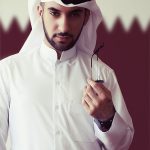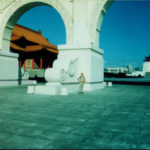Intro: a long drive around this seemingly endless and empty country reveals much natural beauty and on closer inspection a modest LGBT population struggling to re-invent itself and advocate for recogniton and rights. They are spirited, courageous and determined to bring justice and education for LGBT citizens. In 2016 the city of Swakopmund on the coast celebrated the first Gay Pride march.
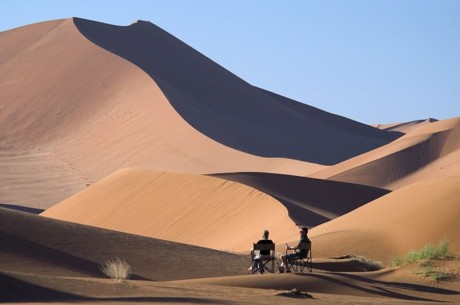
By Richard Ammon
GlobalGayz.com
March 2011
Namibia is an huge country, a bit larger than the UK and France combined, that has stabilized itself from its history of violence under German then South Africa occupation in the last hundred years. It is Africa’s 2nd newest country, with independence achieved from South Africa on March 21, 1990 following passive and aggressive wars from 1966-88 collectively called the Namibian War of Independence. Namibia today has a population of 2.1 million people (that’s 6 people per square mile!) and a multi-party parliamentary democracy that has helped the country to become a model of stability and progress.
Wikipedia reports “Agriculture, herding, tourism and the mining industry – including mining for gem diamonds, uranium, gold, silver, and base metals – form the backbone of Namibia’s economy. It is the second least populated country in the world, after Mongolia. However, approximately half the population live below the international poverty line, and the nation has suffered heavily from the effects of HIV/AIDS, with 15% of the adult population infected with HIV (reported 2007).”
A visitor to this country will experience wide open spaces where wild horses roam, red rock mountains, sublime sand dunes, some upscale and many poor but friendly people in both clean modern cities and primitive rural villages (each with a cell phone tower and a primary school). As usual, a small portion of the population are gay, lesbian or bisexual located mostly in the urban centers, especially in the capital Windhoek, a a bustling growing modern city with a population of about 210,000 residents.
The Future is Now–Swakopmund celebrates their first Gay Pride march June 4, 2016
The city of Swakopmund on the coast of Namibia celebrated their first Gay Pride on the main street of the city on June 4, 2016, Namibia. People from all over the country met for the first time for the march in Namibia. “We are one of the most developed and peaceful countries in Africa but we still haven’t a well-organized LGBT community, so today is an important day for uniting people,” said Florance Khoxas, LGBT rights activist and an organizer of Swakopmund Pride. “Hopefully, next year we will be able to organize a week-long festival to celebrate love in Swakopmund all together,”
A Rebirth and Major Issues
An internet search for the Namibian LGBT community leads to a rather circuitous route since the most frequently listed activist organization, The Rainbow Project (TRP), no longer exits. But as usual gay life springs eternal and there are now three LGBT organizations in the country, two are very recent, since 2010, and one has been around for more than a generation.
Here are the three major LGBT organizations alive in Namibia:
1-Out-Right Namibia (ORN), based in Windhoek, is the ‘replacement’ organization for the Rainbow Project. It barely has an internet presence but it is alive and growing as it works through some issues to re-stabilize as cohesive activist community. When The Rainbow Project (TRP) ceased operation it left some problems that Out-Right Namibia (ORN) is now working to resolve. Some members of ORN are survivors of the Rainbow Project so the present issues and details are well understood.
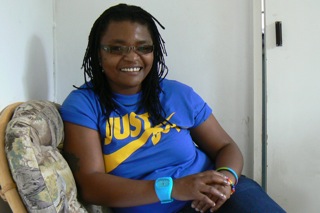 An important issue is overcoming the drama, conflict, resentment and mistrust (and a legal suit) that resulted from the TRP fall. These are beginning to be sorted out thanks to the dedicated efforts to the leadership of ORN, founded in March 2010 and officially registered in November.
An important issue is overcoming the drama, conflict, resentment and mistrust (and a legal suit) that resulted from the TRP fall. These are beginning to be sorted out thanks to the dedicated efforts to the leadership of ORN, founded in March 2010 and officially registered in November.
Leading the way forward are Director Linda RM Baumann (photo left), a native Namibian woman, closely accompanied–as project officer–by her partner of 10 years Gina Tibinyane. Also in charge are Gerald Uiseb, the out-and-proud FtM trans administrator of ORN; the project manager is Friedel Dausab and Jarold, is the project assistant.
Another issue is re-building trust in the new solid, accountable, reliable and transparent ORN for the many LGBTs in the Windhoek area and other cities in Namibia. When The Rainbow Project failed to fulfill it mission properly, after a dozen years, foreign charities became unwilling to continue their support and withdrew their donations, leaving a huge challenge for Linda and the ORN Board to regain the trust of the funders and spread the word of the new organization.
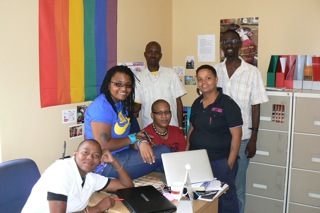 It’s easy to take an ongoing and functioning rights organization for granted in all its functions and organization. But listening to Linda describe the multiple tasks of rebuilding the LGBT group is daunting in complexity and scope: internal structure, policies and strategies; equal rights advocacy; outreach and education; outreach educational services; fund raising and financial affairs; political lobbying (to challenge the sodomy law); documentation of human rights violations; training Human Rights Defenders; networking with other Namibian and international LGBT organizations; developing memberships; sponsoring in-house social and support activities; designing and delivering publication materials–all involved in ‘capacity building’. (photo right, ORN staff)
It’s easy to take an ongoing and functioning rights organization for granted in all its functions and organization. But listening to Linda describe the multiple tasks of rebuilding the LGBT group is daunting in complexity and scope: internal structure, policies and strategies; equal rights advocacy; outreach and education; outreach educational services; fund raising and financial affairs; political lobbying (to challenge the sodomy law); documentation of human rights violations; training Human Rights Defenders; networking with other Namibian and international LGBT organizations; developing memberships; sponsoring in-house social and support activities; designing and delivering publication materials–all involved in ‘capacity building’. (photo right, ORN staff)
“We have a high rate of human rights violations and the LGBT community here is still not comfortable to report cases due to secondary victimization and lack of tracking to ensure that justice is served. Access to public health services is also an area of concern”, Linda said. “So it is crucial that we not be left out of national health and human rights policies. Our existence and persistence on issues of equality and equity are inevitable as our community forms part of the larger society… We opt to challenge the sodomy law and other discriminatory and punitive laws, regulations and policies in Namibia”.
A third challenge facing ORN is more pervasive and cultural than organizational–class separation. The Namibian culture has only recently emerged with a national identity after having been colonized, divided and controlled by Germany (late 19th century until 1918–end of World War I) followed by the South African takeover in 1918 that lasted until 1989 (including the apartheid years). It was not a benevolent occupation by either Germany or South Africa; they mostly exploited the country with slave labor for its minerals and metals with little regard for traditional tribal ways or boundaries or infrastructure. It was only when several tribes united against colonizing foreign invaders and fought–and lost–before South Africa finally agreed to elections and independence in 1989-90 under UN pressure. 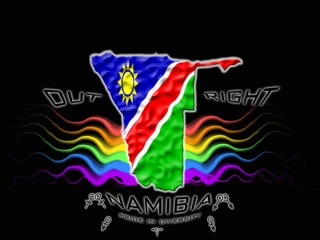
The result of this imperialism was construction of roads and railways but also a distinct social class structure with white rulers having control of most business, banking and land wealth. Ranked below the rulers were the coloreds (mixed races) with some modest status over the blacks who were the majority and were mostly poor and agrarian.
(photo left, ORN logo)
Today the economic and social disparity between whites and blacks is unfortunately common; well-to-do whites protect their valuable turf, their upscale houses and their status against efforts toward social and economic equity.
These separations unfortunately carry over into the LGBT population and prevent a cohesive sense of community between all three groups. Except for a few open-minded people it is difficult to get everyone together at one time and one place for a gay organizational meeting or a party. If whites know there will be black and coloreds attending an event few if any white faces will be seen. More commonly the coloreds and blacks mix more comfortably together.
One activist observed that gay whites want partnership benefits, anti-discrimination laws and social equality. Gay blacks want basic needs like access to education, clean water, clothing, and health care. Gay blacks would like some money for bus or taxi fare to get to a gay event and help to pay for the food that’s offered there. None of these separate desires are inappropriate; but they are quite diverse and on different ‘levels’.
ORN Mission and Politics
Homosexuality is not illegal in Namibia but male sodomy is, which leads the general population to mistakenly believe that homosexuality is also illegal. As a result there is societal homophobia that derives from both this misperception as well as from widespread anti-gay Christianity through the country. The mission of Out-Right Namibia is to advocate for equal constitutional rights for ‘sexually diverse’ citizens, including MSM and WSW people (a number of whom do not identity as LGBT). ORN also is planning to (restart) work on improved quality of life and access to legal and social justice, a huge task in the vastly rural and unequal society.
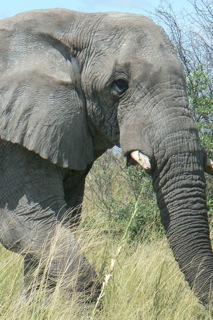 At the present time, due to lack of sufficient funding ORN is hosted and mentored by a larger health and rights organization called Positive Vibes (for HIV+ people) which lends ample office and yard space in its compound in a mid-scale neighborhood (around the corner from the Chinese embassy). Already in little over a year ORN has established ‘community facilitators’ in eight regions throughout Namibia. Currently there is some funding coming from the Global Fund, with anticipated future support from OSISA (Open Society), funneled through Positive Vibes, which allows for two minimally paid staff of ORN backed up by three virtually full-time ‘volunteers’.
At the present time, due to lack of sufficient funding ORN is hosted and mentored by a larger health and rights organization called Positive Vibes (for HIV+ people) which lends ample office and yard space in its compound in a mid-scale neighborhood (around the corner from the Chinese embassy). Already in little over a year ORN has established ‘community facilitators’ in eight regions throughout Namibia. Currently there is some funding coming from the Global Fund, with anticipated future support from OSISA (Open Society), funneled through Positive Vibes, which allows for two minimally paid staff of ORN backed up by three virtually full-time ‘volunteers’.
(photo right, elephant in Namibia’s Etosha Park)
The political scene of course influences the work and progress of ORN. After independence Namibia established a multi-party democracy with a constitution that guarantees fundamental human rights to all citizens, based on both international human rights standards and on traditional laws unique to indigenous tribes of Namibia.
Unfortunately long before the country became a separate entity the South African government imposed their puritanical protestant Dutch-Africaans social laws on Namibia (then called South-West Africa) including sexual and racial matters. In 1927 it criminalized sodomy and the law still stands today and continues to criminalize (actually and potentially) any citizen and specifically the gay male community It also inspires some government leaders to rant and condemn gays from time to time. One of ORN’s near-future goals is to challenge the anti-sodomy law as unconstitutional.
Also:
-Although there are anti-sodomy laws and unfriendly cultural attitudes gay bashing is rare.
-ORN will seek to have hate crimes included in the national domestic violence statutes.
-A Namibian couple once married in RSA later wanted to divorce in Namibia but were not recognized as a couple and were told by a police constable to ‘sort it out’ on their own, as many straight couples do through their families, friends, church, psychotherapists/counselors. ORN is also available for such help. It is these sorts of social supports systems that ORN seeks to sensitize about LGBT issues by presenting educational seminars.
-The age of consent for marriage for males is 18 and 15 for females even though the age of 16 is the age of consent for sex.
2-LGBT Network Namibia
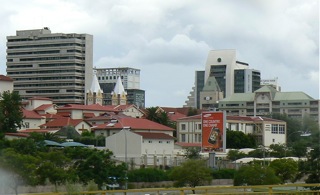 The second gay organization in Namibia called LGBT Network Namibia (LGBTNN). (photo right, Windhoek skyline) On their website they state: “As a future platform [we will] represent the LGBT community in the Namibian society. We, the LGBT Network, Namibia salute the efforts made so far by the (late) Rainbow Project and Sister Namibia. LGBT Network plans to make a difference in the country by uniting Namibians from all sexual orientations under the auspices of the organisation and will work closely with existing organisations to ensure that Namibia continues to foster an environment where gay, lesbian and straight Namibians can live a full and productive life and do their share towards the Namibian society.” See their mission statement.
The second gay organization in Namibia called LGBT Network Namibia (LGBTNN). (photo right, Windhoek skyline) On their website they state: “As a future platform [we will] represent the LGBT community in the Namibian society. We, the LGBT Network, Namibia salute the efforts made so far by the (late) Rainbow Project and Sister Namibia. LGBT Network plans to make a difference in the country by uniting Namibians from all sexual orientations under the auspices of the organisation and will work closely with existing organisations to ensure that Namibia continues to foster an environment where gay, lesbian and straight Namibians can live a full and productive life and do their share towards the Namibian society.” See their mission statement.
Their fun-filled site appears with a description of the launch of LGBTNN and a flourishing social event that included dunes rides, a boat cruise, a “beautiful white marquee tent dressed to impress with the rainbow flags proudly on display”, a buffet dinner with wine and speeches. “At this spectacular event, the LGBT community took a step forward and launched the ‘LGBT Network Namibia’ on April 24, 2010, to create a platform for Namibians with a unconventional sexual orientation to come together and unite with a common goal of Equality For All. LGBT Network Namibia, stands for the proposition that all people are created equal and worthy of the same rights to freedom, liberty, and equality.”
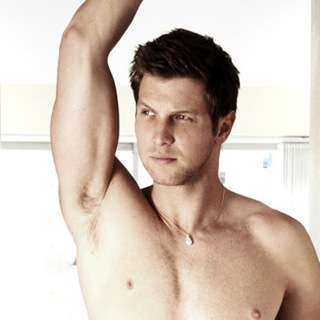 In December 2010 there was a week-long visit by Mr Gay South Africa, Charl vanderBerg (photo left), to Namibia that included attendance at a year-end function sponsored by LGBTNN where he was the guest speaker. Following that he was “pampered for a week at a lodge in the Kaokoveld”, sponsored by Namibia JJ Tours.
In December 2010 there was a week-long visit by Mr Gay South Africa, Charl vanderBerg (photo left), to Namibia that included attendance at a year-end function sponsored by LGBTNN where he was the guest speaker. Following that he was “pampered for a week at a lodge in the Kaokoveld”, sponsored by Namibia JJ Tours.
LGBTNN is the ‘other side’ of gay life in Namibia–the white side. Few black or colored gay Namibians could have afforded the ‘luxury’ of these events. No doubt most of the participants in the LGBTNN drive their own cars to such events and to the meetings. Few black gays own cars reflecting the split between the different economic and social classes that divide the community, if it can be called that.
In response to the launch event in April, one critic noted the N$450 dollars cost to enjoy the inaugural dolphin cruise. “Given their campaign for equality, I am confident that the LGBT Network did not intend to be exclusive, but how many marginalised, poor, LGBT people did they expect to attend this event?… given that at least 40% of Namibians struggle to feed themselves.” See full comments.
Linda was also critical of LGBTNN as a rich white boys club focusing more on social events and white lifestyles than on LGBT poverty, health, jobs and township issues and cross-racial support. She had a similar criticism for the NICE restaurant/school as rich person’s place for upscale parties that are out of reach for most blacks. She feels blacks and coloreds are more inclusive than whites.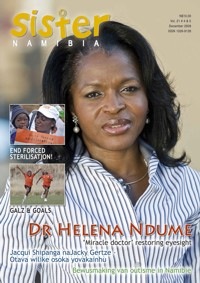
3-Sister Namibia
The Rainbow Project and Out-Right Namibia were preceded by an older organization named Sister Namibia (SN) that’s been around for 25 years. See detailed history. Not specifically a LGBT organization, Sister Namibia is rather a feminist/pro-lesbian association based in Windhoek. The current Sister Namibia Director is Magano Neri.
“Our vision is a society that recognises, protects and celebrates the full personhood of all women and girls including respect for our dignity, diversity, sexual choices and bodily integrity,” said founders Liz Frank and Elizabeth Khaxos. Sister Namibia publishes a respected and well-known magazine called ‘Sister Namibia’ each month. It was first published in Windhoek in July 1989. (photo right, February 2011 issue)
See video of Liz Frank interview .
Since SN’s founding in the 80’s and the former TRP in 1998 these rights groups have been able to operate relatively freely in Namibia’s major cities, even though they have been occasionally been targeted by anti-gay/feminist individuals (including politicians and clergy) and unemployed bored youths with time on their hands.
A small symbolic societal change could be seen in a recent (2011) story in the national newspaper ‘The Namibian‘ about infidelity and affairs outside marriage or committed dating. Titled ‘You, Me and your Komboroto‘ (a secret outside paramour, male or female) the photo essay showed half a dozen ‘three-way couples’, that is, a guy with a girlfriend and his secret second girl. Among these images there is one showing a girlfriend with her guy–awhile she is holding hands behind his back with her secret girlfriend.
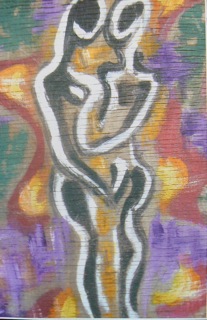 This depiction of diverse sexual attraction is not unusual for modern southern Africa. South Africa is well known for its overt LGBT community (and overt assaults) as well as in Botswana, to a lesser degree, where the national LGBT rights group is openly suing the government to decriminalize homosexuality in a case that has drawn international media attention and local newspaper headlines.
This depiction of diverse sexual attraction is not unusual for modern southern Africa. South Africa is well known for its overt LGBT community (and overt assaults) as well as in Botswana, to a lesser degree, where the national LGBT rights group is openly suing the government to decriminalize homosexuality in a case that has drawn international media attention and local newspaper headlines.
So gay life is not exactly underground in Namibia even though it is mostly below the surface and occasionally bubbles up when a political or religious leader makes a public statement or criticism about homosexuality. As ORN gears up its projects and programs, more will be heard about LGBT life and issues. Since homosexuality is not, per se, illegal in Namibia, ORN can expect to move forward without major legal obstacles, as in neighboring Botswana where there is a law on the books that criminalizes homosexuality.
The real enemy here is ignorance and anti-gay discrimination. A recent published letter from gay Namibian Ali Shikongo, said, “I am not a free Namibian in my own country… Namibians who suffered greatly from hatred under the previous South African apartheid government do not tolerate homosexual Namibians. But now South Africa has changed; it constitutes freedom and equal rights for all its citizens, irrespective of their colour, age, race, sex, social class and sexual orientation and homosexuals are protected by anti-discrimination laws. But not in Namibia; we still suffer…”
Family Life: Dinner with Linda and Gina
I met Linda and Gina (ORN leaders) for dinner one night in central Windhoek, a bustling, clean modern city with new and colonial style buildings, parks, shopping malls and numerous restaurants–including a chic and stylish one called Nice that’s a culinary school as well. We ate at the less pricey steak and ribs joint half mile away.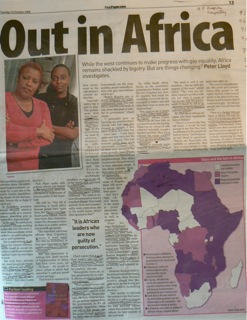
Linda and Gina are unusual for being the first lesbian couple to come out publicly in Namibia and for being together for ten years–a long time by African standards. Despite their years as a couple they do not live under the same roof. This has mostly to do with the obligations both feel toward their families.
In black Africa, individuality is often subsumed by the family unit, for many its their tribe. Linda’s home is under the matronage of her modest mother (who prepares food for sale–lamb heads) while she and Linda and Gina watch over their household of ten relatives, including the three children of Linda’s deceased sister and two children of her living sister. It is a busy household with people, including friends, who come and go throughout the day.
Virtually every LGBT person I met on this trip to Botswana and Namibia lives with family members, whether with a mother or a whole housefull of clan members, partly due to financial reasons and much to do with strong family ties that help support one another. Linda’s position as ORN director is not yet a paid position so she derives income from being a media advocate on the weekly programme on National Television “Namibia Broadcasting Corporation NBC. Her “presence and prominence on national issues brings a different perspective the LGBT people. I also do training and development, skills and knowledge development of partners and mainstream organisations as a means of income.” Read more details about Linda’s progression from closeted lesbian to out and proud activist role model in a 2007 article written by Liz Frank for Sister Namibia magazine.
Although Gina lives with Linda, in Linda’s home, she is close to her mother, four siblings and their kids and a spouse who all share contribute in common support. Gina is also a photographer who has travelled the country and created images of Namibians “who live their lives out and proud. The pensive and smiling faces engage, and a pair of old sneakers, abandoned on a rubbish dump in a small northern town, led Gina to write a poem called ‘I am what I am’, which states that regardless of the challenges people place in her path, she just grows stronger and more proud,” a reporter wrote about Gina.
Both women are the ‘grounding’ persons in their families, providing care, support, income, authority and guidance. After they came out to their families there was a period of disturbance and upset but eventual both mothers came around and are accepting and affectionate toward both partners.
The LGBT Scene in Windhoek and Beyond
As usual in homophobic societies, the LGBT scene in urban centers mostly consists of friendship circles that overlap and communicate with each other often during the day by phone, texting or online. Many have Facebook pages and e-mail accounts. The most common event is sharing food, take-out or sit down or home made, at the ORN office or in Zoo Park in central city or on bench at the Mall. 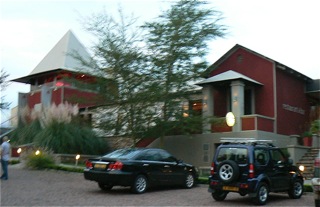 There is only one ‘gay’ bar, Sulies, which is popular with black and colored folks while upper class LGBTs prefer the Maspiri club in the Goieangab district. Nice restaurant, mentioned above, is also a stylish meeting/eating/culinary school that is mixed as the owner is welcoming to GLBT people. (photo right, Nice)
There is only one ‘gay’ bar, Sulies, which is popular with black and colored folks while upper class LGBTs prefer the Maspiri club in the Goieangab district. Nice restaurant, mentioned above, is also a stylish meeting/eating/culinary school that is mixed as the owner is welcoming to GLBT people. (photo right, Nice)
The ORN offices, in addition to their official work, are also becoming known as a drop-in center for people in need of sympathetic contact, personal counseling or something to eat. The staff try to always have some food snacks and drinks on hand. In the enclosed yard behind tall walls ORN has sponsored small informal parties after-hours and there is even a garden planted by some members.
Linda said that out people stop by in the daytime and closeted people come in the evening after sunset. She also thought that about 50% of LGBT people are in relationships–mostly heterosexual. In Namibia, if a couple have cohabited for seven years or more they are considered married. One of ORN’s challenges to the government is to get the same status for LGBT couples as well.
A gay man from Windhoek recently noted, “since 2005 we’ve had our second black president who is more tolerant–there are some rumours that his own son is gay. That changed the scene dramatically.
“Although gay life now isn’t so much in the open as in South Africa. We do have gay parties and organized functions and even some gay cultural film festivals as well. Most of our gay people are from the black community and some are quite famous in the capital. We are not so much doing the hugging and cuddling in the open, but the gay scene is much thriving.
“Sexually, be careful that some of the black males aren’t what they seemed to be. They are famously ‘straight’, as are most Angola males, but they are willing to screw you for a quick big buck and even may rob you. Some of the straight black males don’t do the blowing action, most don’t like the taste, but they will screw you–and they do screw like stallions.
The city of Swakopmund on the coast of Namibia celebrated their first Gay Pride on the main street of the city on June 4, 2016, Namibia. People from all over the country met for the first time for the march in Namibia. We are one of the most development and peaceful countries in Africa but we still haven’t a well-organized LGBT community, so today is an important day for uniting people. “Hopefully, next year we will be able to organize a week-long festival to celebrate love in Swakopmund all together,” said Florance Khoxas, LGBT rights activist and an organizer of Swakopmund Pride.
“That is basically the gay scene here in Namibia. It is improving with the human rights being updated and implemented by our new president. He is more a human kind of person then the previous president. So we as gay people are hopeful that soon we will have our open freedom like in RSA.”
In the Outback
That said, however, consider for a moment the majority of LGBT Namibians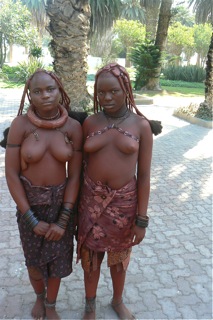 who do not live in wired cities and know little about WiFi or computers. They have virtually no contact with gay organizations, ‘gay’ as an identity, gay parties, venues or mature gay romance as a valid social entity. Driving around Namibia’s vast open spaces with often fifty miles between small villages and hundreds of miles to the nearest major city, what opportunity does an isolated LGB person have to express or explore their different affectional desire? Virtually none.
who do not live in wired cities and know little about WiFi or computers. They have virtually no contact with gay organizations, ‘gay’ as an identity, gay parties, venues or mature gay romance as a valid social entity. Driving around Namibia’s vast open spaces with often fifty miles between small villages and hundreds of miles to the nearest major city, what opportunity does an isolated LGB person have to express or explore their different affectional desire? Virtually none.
I drove a thousand miles within Namibia passing tiny clusters of houses that could hardly be called a village. In any one or several of those rural places how would a young gay person come to understand their feelings? There is often a primary school house, perhaps a store surrounded by very wide open plains with scrub grass for grazing cows, goats or donkeys. I saw many child shepherds tending to the family flocks, sitting and watching the occasional vehicle speed by–if the road was paved, most were not). For secondary schools a child has to walk miles or ride in a donkey cart or, not often, a local bus. Many children stop their education after primary school, around age ten, because of the distance to a higher school or lack of school fees and costs of uniforms and books.
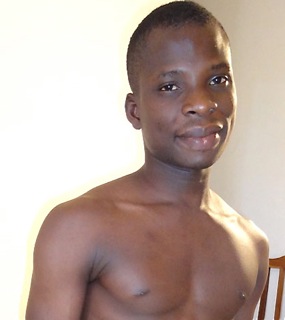 Reading a report such as this one about rural poverty is daunting: “The rural poor are typically under-educated, with limited access to health care, adequate sanitation or gas and electricity supplies. Food shortages are a major problem during years of drought, and nutritional intake is consistently poor.”
Reading a report such as this one about rural poverty is daunting: “The rural poor are typically under-educated, with limited access to health care, adequate sanitation or gas and electricity supplies. Food shortages are a major problem during years of drought, and nutritional intake is consistently poor.”
In such a context, sexual orientation or sexual minority rights seem ludicrous to consider given the sparse subsistence level of human activity. The challenge for one small organization like ORN, on a limited budget, seems impossible to evaluate or begin to address. Yet ORN has already established outpost regional volunteer contacts in eight of Namibia’s twelve geographic districts which Linda and ORN staff intend to visit and offer outreach education on health, HIV and sexuality.
The vast majority of rural inhabitants have little basic information about sexuality and less about sexual orientation and even less about homosexuality as a valid force for affection and intimacy. It is a foreign language that is not spoken or heard; rather they are surrounded by tradition and/or biblical teachings and, accordingly, follow tradition into heterosexuals marriage and kids without any intelligent awareness of the differentness they may feel deep inside. Not unusual for poorly educated rural population.
Some Comments About AIDS/HIV in Namibia
(1) “HIV/AIDS in Namibia is a critical public health issue. The percentage of HIV in Namibia is among the highest in the world. Since 1996, HIV has been the leading cause of death in the country. Close to 17 per cent of the country’s children under the age of 18 are orphaned by at least one parent – mostly due to HIV. Consequently, life expectancy has declined since independence from 61 years (in 1991) to 49 years in 2001.
“In Namibia, HIV is mainly spread through heterosexual sex, driven by high rates of multiple and concurrent partnerships, transactional (extra-marital) sex and child abuse. Inconsistent condom use, low rates of male circumcision, high rates of alcohol abuse, a high rate of mobility and migration, and a decline in marital and cohabiting unions all add to the problem. Of greatest concern to many are the AIDS orphans and vulnerable children left behind in the trails of this disease.” (from: http://en.wikipedia.org/wiki/HIV/AIDS_in_Namibia)
(2) “The first HIV infection in Namibia was diagnosed in 1986, and the country now faces a mature generalized HIV epidemic that is primarily sexually transmitted. Prenatal clinic surveillance data show HIV prevalence rates among women increased has hovered around 10% according to the National HIV Sentinel Survey
“Namibia remains among the eight countries with the highest prevalence rates in the world, according to the Population Reference Bureau, requiring continued attention to both treatment and prevention. The population of 2.2 million is highly dispersed, creating challenges in accessing services and reaching remote populations. HIV prevalence varies greatly by region, from 6 percent to more than 30 percent; it is higher in the more densely populated regions along the northern borders with Angola, Botswana, and Zambia (Ministry of Health and Social Services Report of the National HIV Sentinel Survey).” (from: http://www.usaid.gov/our_work/global_health/aids/Countries/africa/namibia.html)
Also see Gay Namibia News & Reports

